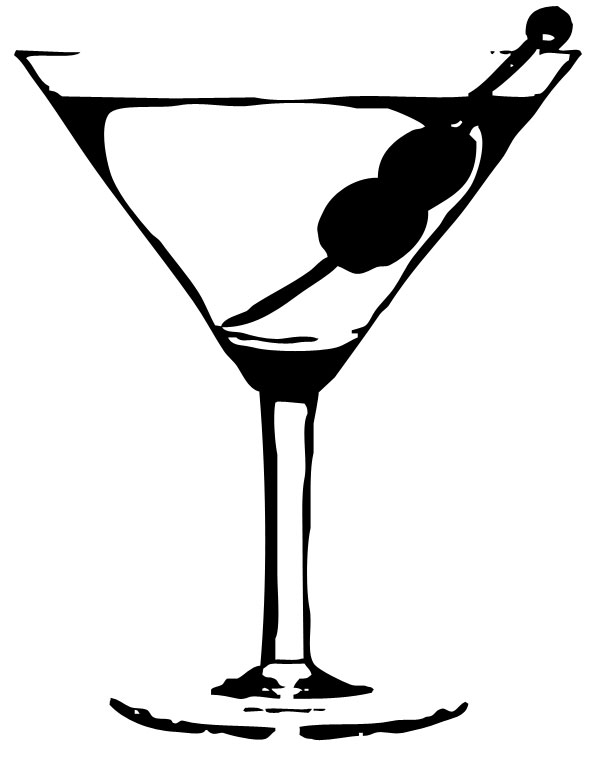
Interviews with the Movers and Shakers in the World of Mixology
Hosted by Blair Frodelius of GoodSpiritsNews.com

A Conversation with Martin Cate
"The
more I dove into rum, the
more I loved unearthing its history and tasting the old magic.”
- Martin Cate
- Martin Cate
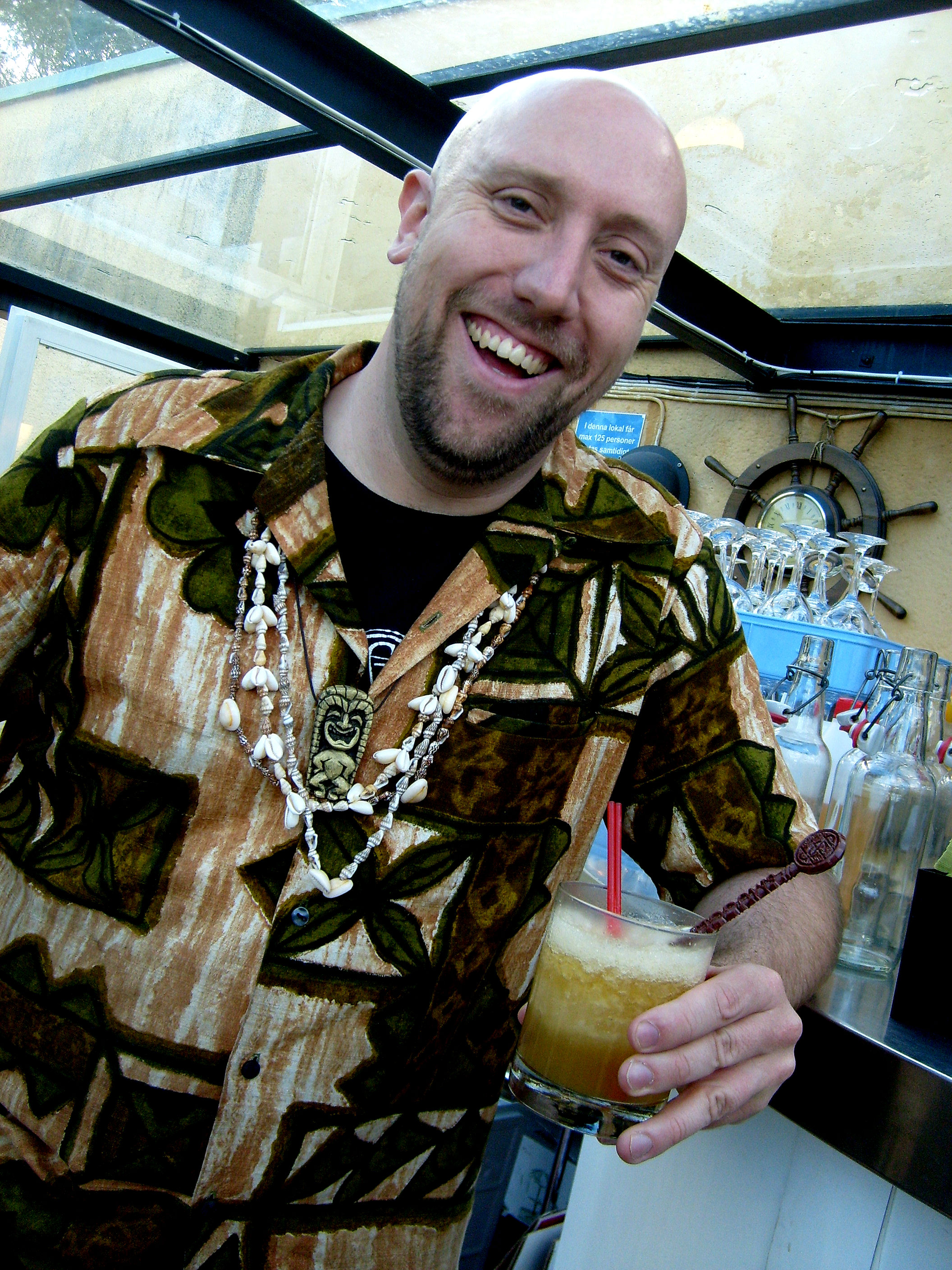 Martin Cate (seen at left in a photo by
Helena Tiare Olsen) is the owner of Smuggler's
Cove, recently listed as one of the top 50 bars in the world by Drinks
International Magazine. Specializing in rum and Tiki cocktails,
it has quickly become one of the must-visit bars in the U.S. for any
rum or Tiki enthusiast. I ran into Martin in San Juan, Puerto
Rico recently
where he agreed to answer a few questions over drinks...
Martin Cate (seen at left in a photo by
Helena Tiare Olsen) is the owner of Smuggler's
Cove, recently listed as one of the top 50 bars in the world by Drinks
International Magazine. Specializing in rum and Tiki cocktails,
it has quickly become one of the must-visit bars in the U.S. for any
rum or Tiki enthusiast. I ran into Martin in San Juan, Puerto
Rico recently
where he agreed to answer a few questions over drinks...
MC: I love its versatility, it's vast historical significance, and the fact that it's magically delicious.
GSN: Off the top of your head, what are the five rums that every spirit enthusiast should try in their lifetime?
MC: That is such a hard question, because today in the market, there are literally hundreds of great rums- more than have been available in almost a century,
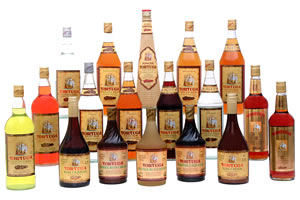 GSN: Where
do you see the future of
rum headed? Are we looking
at ever more ridiculously flavored rums (menthol rum, anybody? - ed.), or do
you see small
batch, artisanal rums becoming the consumer’s choice?
GSN: Where
do you see the future of
rum headed? Are we looking
at ever more ridiculously flavored rums (menthol rum, anybody? - ed.), or do
you see small
batch, artisanal rums becoming the consumer’s choice?MC: I think we're definitely moving towards premium and super premium rums. As the American consumer re-discovers rum and falls in love again with its complex flavor and (for now) attractive price point, I see less and less interest in flavored stuff. Spiced is experiencing a big surge right now, and I see that as a better gateway to premium rums than some of the weirdly flavored products.
GSN: What should people be aware of when tasting rum? In other words, how can they tell an amazing spirit from an average one?
MC: Because it's so diverse, I'm looking for different things when trying different rums- I don't look for the same components in rhum agricoles as I look for in dry, Spanish-style molasses rums. So it's hard to classify briefly. One thing to notice is an overabundance of vanilla in a non-spiced rum, which is a sign that it's possibly been "juiced" with extra vanilla to soften some rough edges.
GSN: What is your favorite rum cocktail?
MC: It's the one in my hand! I don't have a favorite rum cocktail. Sometimes I'm in the mood for a big complex tiki drink, sometimes I just like a rum old fashioned. A nice daiquiri is still the best way to showcase a good rum, with fresh lime juice and nice quality sugar, both of which should be restrained so that they don't cover up the rum.
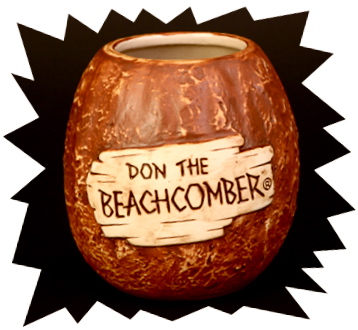
GSN: Speaking of tiki drinks, they've been celebrating a renaissance over the past few years. What do you attribute this to?
MC: It's really the same thing that kicked it off in the first place- a desire for escapism, largely as a result of bad economic times. People love to forget the 9 to 5 and imagine a world of perpetual dusk with exotic beverages. Tiki was such an enormous part of American life for over 30 years, and was so very nearly eliminated from the pubic consciousness, that its return seems revelatory; as if to say, "Where has this been all my life?!"
GSN: How did you get into tiki culture? Was it always a fascination for you, or did you have an epiphany?
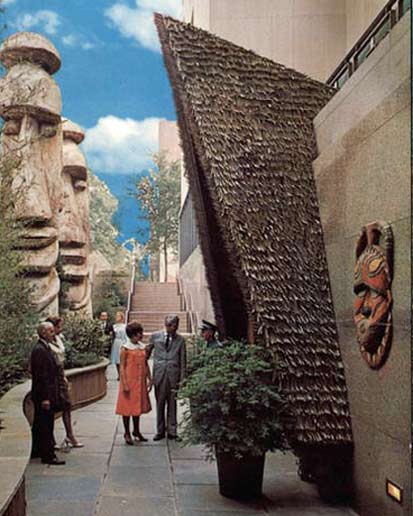 MC: I
fell for tiki in
1994 at the Washington DC Trader Vic's (seen at left in a vintage photo).
I was working in DC at
the time, and a co-worker suggested we go. I was absolutely blown
away by the contrast- deep inside this staid, marble edifice of a
hotel, lurked this riot of polynesian-pop decor, bamboo, and exotic
cocktails served in these huge ceramic bowls. I was smitten, and
while it didn't happen right away, the seed was planted and it's become
my entire life.
MC: I
fell for tiki in
1994 at the Washington DC Trader Vic's (seen at left in a vintage photo).
I was working in DC at
the time, and a co-worker suggested we go. I was absolutely blown
away by the contrast- deep inside this staid, marble edifice of a
hotel, lurked this riot of polynesian-pop decor, bamboo, and exotic
cocktails served in these huge ceramic bowls. I was smitten, and
while it didn't happen right away, the seed was planted and it's become
my entire life.GSN: What in your opinion are the major differences between how Trader Vic (Victor Bergeron) and Donn Beach (Don the Beachcomber) approached creating faux tropical drinks?
MC: Donn's drinks are, in general, more baroque and there are certain favorite flavors that he loved that Vic rarely touched, like herbsaint. Vic's drinks were more straightforward preparations, but still complex and interesting. Vic, perhaps because he was French, loved orgeat, which Donn never really used. It's a lot more complicated than this short summary, but that's a general overview.
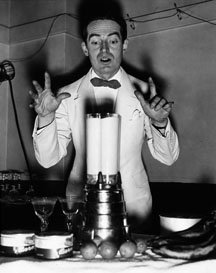
SN: Speaking of uncomplicated drinks, do you think blender drinks will make a comeback, or have frozen margaritas and daiquiris sullied their reputation? (Fred Waring and his innovative blender pictured at right circa 1937).
MC: I think blender drinks are well poised for a comeback. Modern blenders are better than ever at creating excellent uniform ice consistency & aeration, while being quieter than ever. I think you still have to hold a consumer's hand to get them on board initially, but at the end of the day, it's the quality of ingredients that counts- make sure your customers know that it's good stuff in their glass.
GSN: What are some of your favorite tiki bars and bartenders around the world?
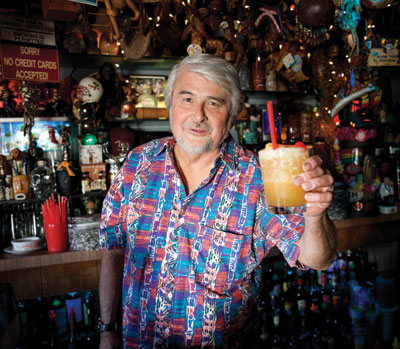 MC:
Well, first off it's
the mighty Buhen family (Mike Buhen
pictured at left), behind the stick for over 50 years at Los
Angeles' amazing Tiki-Ti. The Molokai Bar at the Mai Kai in Fort
Lauderdale is a priceless jewel in the tiki world, and still my
favorite place to be. Love Jamie @ Kanaloa in London, the
beautiful new lounge at Trader Vic's Emeryville, the crew and the
madness at Trailer Happiness in London, the amazing decor of: the Hala
Kahiki near Chicago, Bahooka in Rosemead, CA, Frankie's in Las Vegas,
and La Mariana in Honolulu. And the perfectly preserved
interior of Trader Vic's London.
MC:
Well, first off it's
the mighty Buhen family (Mike Buhen
pictured at left), behind the stick for over 50 years at Los
Angeles' amazing Tiki-Ti. The Molokai Bar at the Mai Kai in Fort
Lauderdale is a priceless jewel in the tiki world, and still my
favorite place to be. Love Jamie @ Kanaloa in London, the
beautiful new lounge at Trader Vic's Emeryville, the crew and the
madness at Trailer Happiness in London, the amazing decor of: the Hala
Kahiki near Chicago, Bahooka in Rosemead, CA, Frankie's in Las Vegas,
and La Mariana in Honolulu. And the perfectly preserved
interior of Trader Vic's London.GSN: You yourself run a world class tiki/rum bar. Tell us about Smuggler's Cove (seen below) and your ethos in running it.
MC: Smuggler's Cove is a tiki-centered celebration of rum. I wanted to open a no-compromise, all-fresh, all-premium tiki bar, but with a larger vision.
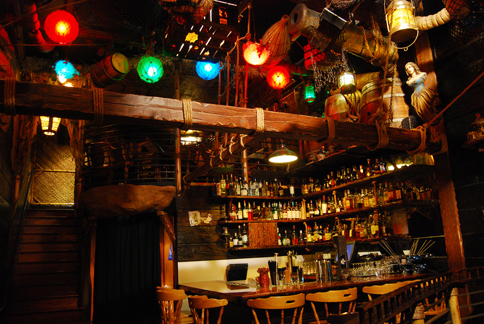 Exotic cocktails are
my heart & soul but they
represent only about 35 years
of the 300+ year old story of rum.
So the menu is designed to
reflect that, with drinks ranging from
Colonial America to modern mixology. All of them use carefully
chosen rums that reflect the appropriate style, region, and historical
accuracy of the drink. There's no such thing as "well" rum for
us- the menu uses 30 different rums for the 75 drinks, along with 18
housemade ingredients and 100% fresh citrus juiced in-house
daily. Beyond that, we offer over 300 premium rums to show off
the incredible diversity of the spirit. The decor is reflective
of San Francisco's nautical and tiki history with pieces from long gone
San Francisco tiki bars and tons of maritime salvage. The vibe is
relaxed and conversational, with no TVs or games to distract.
Exotic cocktails are
my heart & soul but they
represent only about 35 years
of the 300+ year old story of rum.
So the menu is designed to
reflect that, with drinks ranging from
Colonial America to modern mixology. All of them use carefully
chosen rums that reflect the appropriate style, region, and historical
accuracy of the drink. There's no such thing as "well" rum for
us- the menu uses 30 different rums for the 75 drinks, along with 18
housemade ingredients and 100% fresh citrus juiced in-house
daily. Beyond that, we offer over 300 premium rums to show off
the incredible diversity of the spirit. The decor is reflective
of San Francisco's nautical and tiki history with pieces from long gone
San Francisco tiki bars and tons of maritime salvage. The vibe is
relaxed and conversational, with no TVs or games to distract.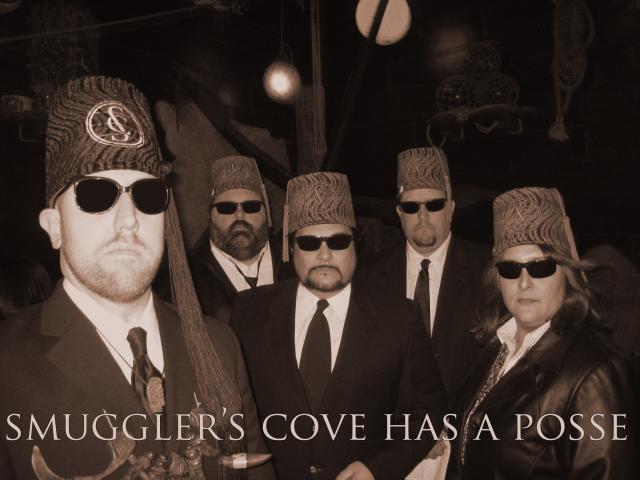 GSN: You
also host a rum enthusiasts club called the Rumbustion
Society. What's that all about?
GSN: You
also host a rum enthusiasts club called the Rumbustion
Society. What's that all about?MC: The Rumbustion Society is a club that combines the bottomless pleasure of drinking rum with an educational component. We've got hundreds of Disciples, 19 Guardians, 7 Masters, and 3 who have entered the secret 300+ Club. We've done two distillery trips so far with Masters, and have a third coming up in early 2012.
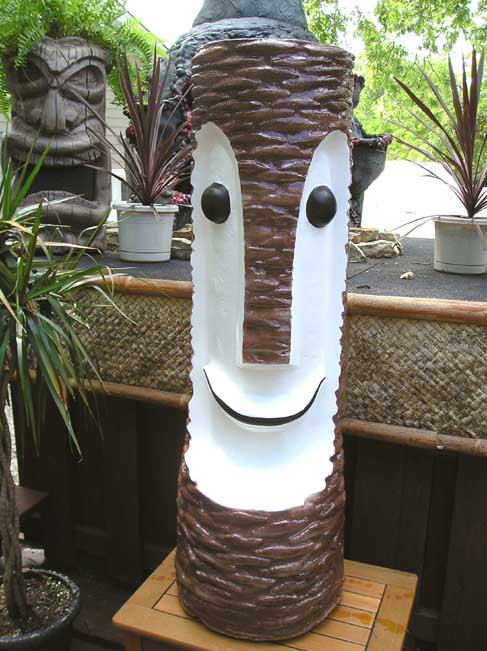 GSN: At
Hukilau (Tiki
Festival in Ft. Lauderdale) you did a presentation on the Rum
Revolution. What is the smiley face mascot of the revolution and
where did it come from?
GSN: At
Hukilau (Tiki
Festival in Ft. Lauderdale) you did a presentation on the Rum
Revolution. What is the smiley face mascot of the revolution and
where did it come from?MC: The mascot of the revolution is Tiki Bob, in Che Guevara drag. Tiki Bob is the name used to refer to the tiki mug mascot/log of the old San Francisco restaurant Tiki Bob's. It was opened by Bob Bryant, a former Trader Vic's manager. It is thought that the Tiki Bob mug is possible the first ever tiki mug- or mug to feature a tiki of some kind. (There were coconut and bamboo mugs prior). The place is long gone, but the support post out front that is carved in the shape of Bob is still there. Do a Google Image search for "Tiki Bob" and ignore the crappy & unrelated "Tiki Bob's Cantina" results.
GSN: What are your favorite items in your Tiki/rum collection?
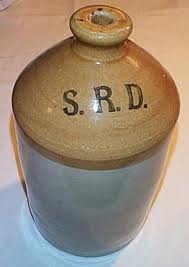 MC: Virtually all of my
favorite pieces are in Smuggler's Cove right now- from the WW1 British
Rum Ration jug (seen at left),
to the old signage from Trader Vic's San
Francisco. Please come visit and let me show you around! (Click here
for some pictures from the interior of Smuggler's Cove)
MC: Virtually all of my
favorite pieces are in Smuggler's Cove right now- from the WW1 British
Rum Ration jug (seen at left),
to the old signage from Trader Vic's San
Francisco. Please come visit and let me show you around! (Click here
for some pictures from the interior of Smuggler's Cove)GSN: As you've traveled around the U.S. what differences do you see between West coast and East coast cocktail culture? What part does rum play in these differences?
MC: I think the distinctions are pretty blurred at this point. As far as rum is concerned, I see top cocktail places on both coasts embracing premium rums as a base spirit more and more, particullarly for spiritous cocktails. Where you might have once grabbed a rye or brandy, rum is starting to appear more and more on menus in stirred cocktails with amaros and herbal liqueurs. This is a real testament to the increasing number of great rum brands out there today and how they are making themselves visible to mixologists.
GSN: Thanks for chatting, Martin. One last question I always ask bartenders, what do you think the origin of the word “cocktail” is?
MC: I feel pretty good about the egg cup story. (for more cocktail origin theories, click here).
When
not behind the stick at Smuggler's Cove, Martin can be found somewhere
in the world expounding upon the various joys of rum!
Blair Frodelius lives in
upstate New York
and is the
editor of Good Spirits News.
He is also a full-time professional
musician
and is co-founder of Out of the Box Entertainment.
He can be
reached at goodspirits@frodelius.com
- Interviewed by Blair
Frodelius; November, 2011

